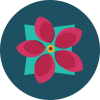 Increasing height of weir among recommendations
Increasing height of weir among recommendations
Robert Barron, Cowichan Valley Citizen, Jun 17, 2018
After months of deliberations, the Cowichan Water Use planning process has resulted in recommendations for water supply and storage options for the Cowichan Lake and river system.
Recommendations were presented during a public meeting held in Lake Cowichan on June 11.
Among the recommendations by a 19-member public advisory group (PAG) is to increase the height of the weir that separates Cowichan Lake from the Cowichan River by 30 centimetres or more on an interim basis to control the amount of water in the river.
A longer-term maximum weir height increase to 70 centimetres or more would only be considered after extensive discussions and negotiations with impacted property owners.
The PAG also recommends allowing for temporary pumping to be used as an emergency measure to maintain a minimum flow down the Cowichan River during severe summer droughts.
As well, the PAG recommends starting to store water and control outflows on the Cowichan River one month earlier than the current start date each year.
Water use and supply in the Cowichan Lake and the Cowichan River system has long been a source of concern for residents of the Cowichan region.
The impacts of climate change, including hotter, drier summers and lower snow packs, have already resulted in one-third less water flowing into Cowichan Lake than when the weir was originally constructed in the 1950s.
“During many years, there has no longer been enough water to support the varied needs of fish, local residents, industry and other users,” said Jon Lefebure, chairman of the Cowichan Valley Regional District.
“By 2050 critical snow pack is projected to decrease by 85 per cent, reducing lake inflows in the spring and early summer. This will be compounded by a reduction in summer rainfall of 17 per cent. Further, water storage to support continued flow in most years will not be possible in the future without additional storage and adjusted management regimes.”
A community planning process to explore options was initiated by a partnership of the CVRD, Cowichan Tribes, the Cowichan Watershed Board and Catalyst Paper.
Further, the PAG, which includes representatives from local, provincial and federal governments, First Nations, industry, local community and interest groups and area residents, has been meeting since November to evaluate potential water supply and storage options for the Cowichan Lake and River system.
The PAG carefully assessed the alternatives and the tradeoffs for ensuring adequate flows and water levels for fish and other aquatic species, avoiding flood risk for lakefront property owners, and minimizing impacts on water users on the lake and river.
At its final meeting on May 8, the PAG reached consensus on a preferred water use alternative, presenting its proposed recommendations during the public information session on June 11.
More information on the Cowichan Water Use planning process can be found at cowichanwup.ca.
 Email
Email



